During our round trips through Albania, I could not help noticing that there are still a lot of socialist realistic monuments, bas-reliefs and sculptures to be found in every corner of the country.
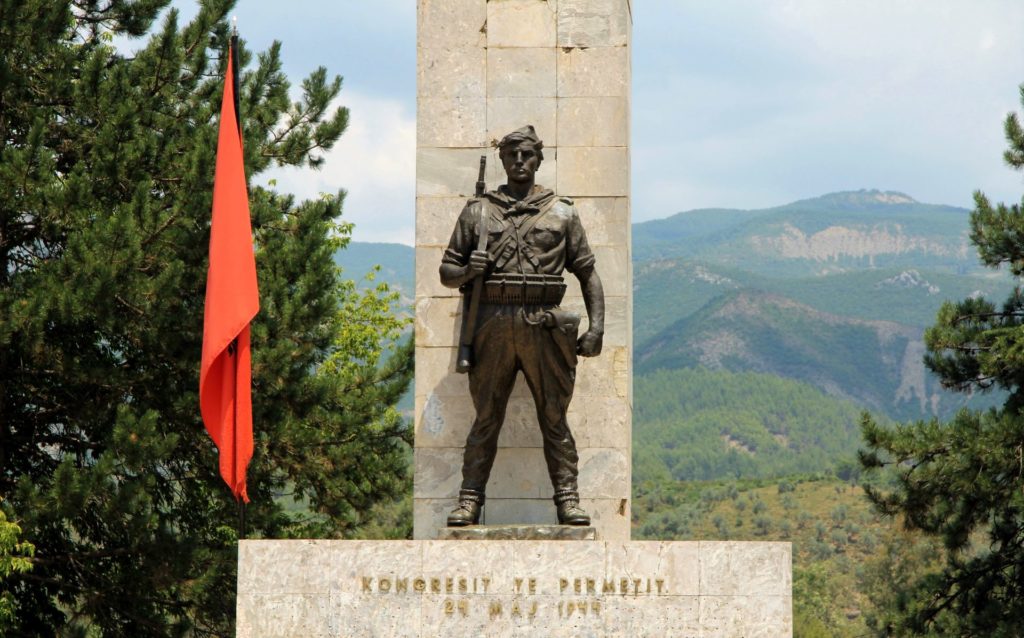 One of the finest examples of socialist realism is the huge mosaic called ‘The Albanians’ that decorates the façade of the National Historical Museum in Tirana. This work was made by five Albanian artists and covers 400 m2. It tells the story of how Albanians fought against invasion and occupation throughout the centuries. Another typical example is the Partisan Memorial in Përmet that commemorates the Partisans who fought around Përmet in World War II.
One of the finest examples of socialist realism is the huge mosaic called ‘The Albanians’ that decorates the façade of the National Historical Museum in Tirana. This work was made by five Albanian artists and covers 400 m2. It tells the story of how Albanians fought against invasion and occupation throughout the centuries. Another typical example is the Partisan Memorial in Përmet that commemorates the Partisans who fought around Përmet in World War II.
But what is socialist realism? Socialist realism is a style of idealized realistic art that was developed in the Soviet Union and was the official style in that country between 1932 and 1988. This artistic style, characterized by the glorified depiction of communist, patriotic and national values, was taken over by other socialist countries after World War II. Most pieces of art were created in the period 1966-1976.
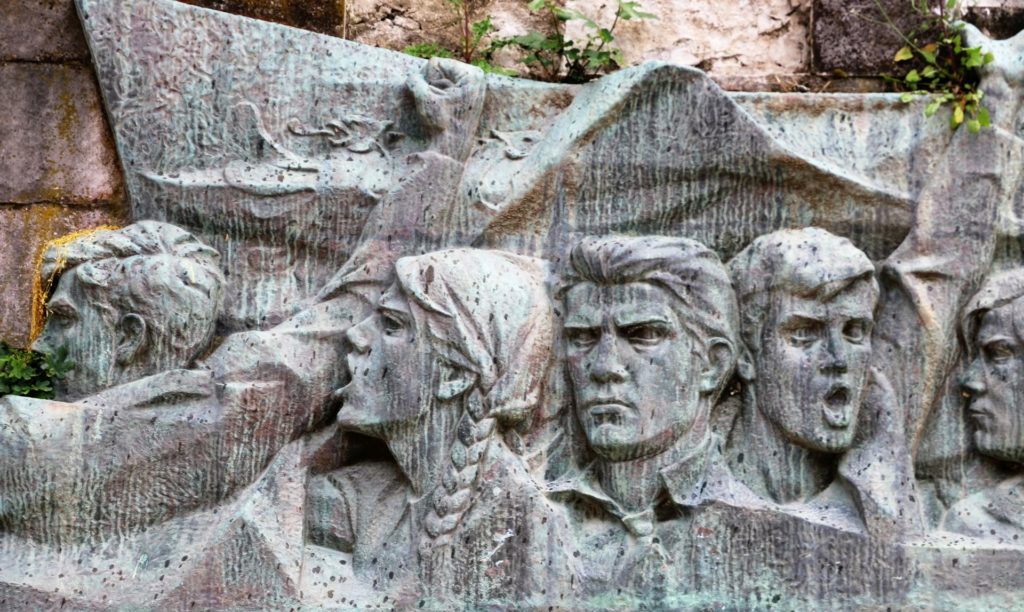 After the fall of the Berlin Wall, socialist realism lost popularity, which means that many monuments of this type have been removed or destroyed in the countries of Eastern Europe – although there are some exceptions: Moldova for instance, and Ukraine (until a few years ago). But the most striking example is Albania, where numerous monuments, statues, mosaics and bas-reliefs still exist, although many of them have largely fallen into disrepair.
After the fall of the Berlin Wall, socialist realism lost popularity, which means that many monuments of this type have been removed or destroyed in the countries of Eastern Europe – although there are some exceptions: Moldova for instance, and Ukraine (until a few years ago). But the most striking example is Albania, where numerous monuments, statues, mosaics and bas-reliefs still exist, although many of them have largely fallen into disrepair.
A good example is the relief at the bottom of the stairs into a high school in the old part of Gjirokastër that commemorates an event in 1942, when the local gymnasium students demonstrated against, and clashed with Italian soldiers. The bas-relief depicts five young people (two of them are girls, which is quite typical for socialist realism), with a determined look on their face.
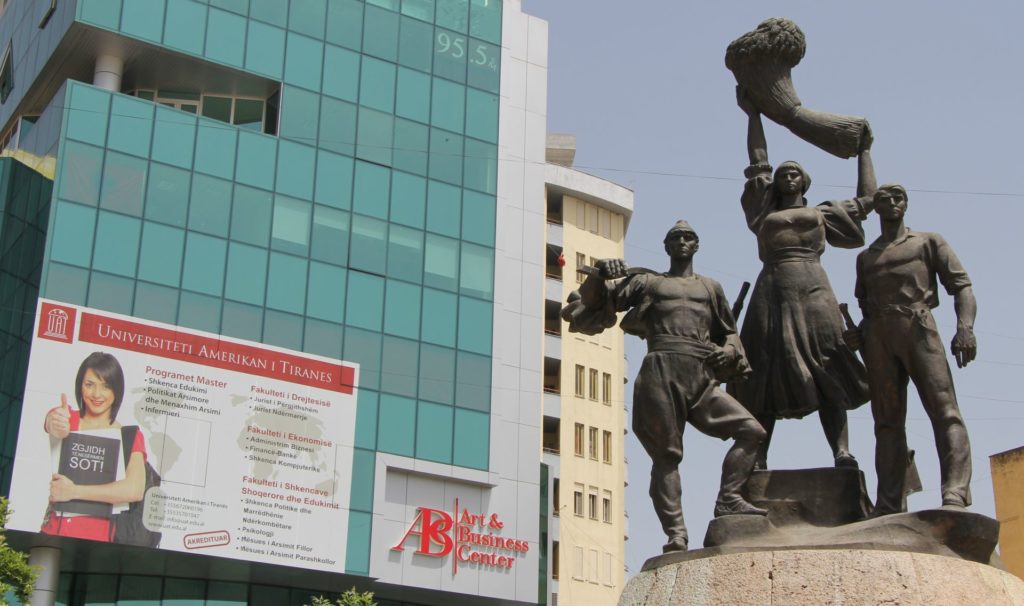 Western cultures often do not have a positive opinion about socialist realistic art. Why? Maybe because it served as propaganda against capitalism/imperialism? Or maybe because it did not allow real creativity? I agree, the brutalist and abstract monuments that can be found everywhere in the countries of ex-Yugoslavia are quite different. By the way, www.spomenikdatabase.org describes almost all ‘abstract’ war monuments in ex-Yugoslavia, why wouldn’t they start a database of socialist realistic monuments?
Western cultures often do not have a positive opinion about socialist realistic art. Why? Maybe because it served as propaganda against capitalism/imperialism? Or maybe because it did not allow real creativity? I agree, the brutalist and abstract monuments that can be found everywhere in the countries of ex-Yugoslavia are quite different. By the way, www.spomenikdatabase.org describes almost all ‘abstract’ war monuments in ex-Yugoslavia, why wouldn’t they start a database of socialist realistic monuments?
It is true, a lot of of monuments are left to the ravages of time, but nowadays, there seems to be a trend developing to recover, restore and respect the past. The reason for that is not only because people understand that these monuments could be interesting for developing tourism, but also because many of them are aware of the fact that so-called ‘democracy’ has not brought what it promised. People start to view the past in a different way. So, don’t be surprised when you pass through an Albanian town and see a huge socialist realistic monument in front of a super-modern glass building with billboards promoting the American University in Tirana!
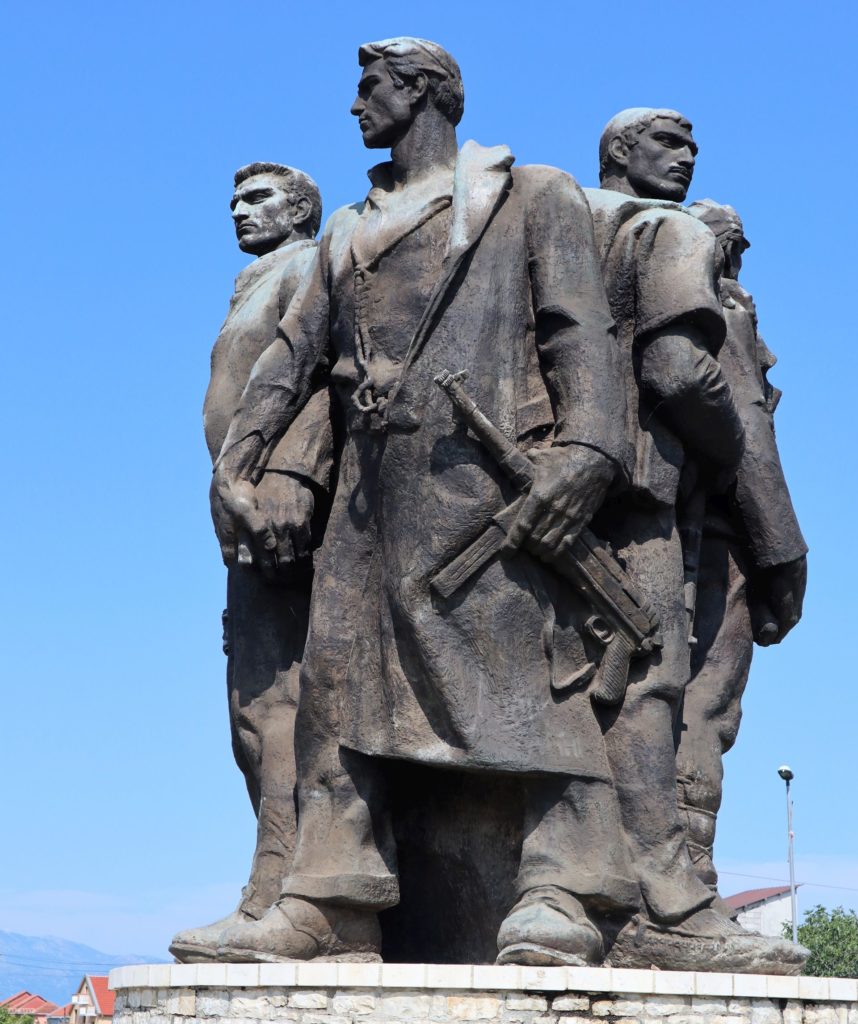 I do think that it is important to maintain these unique art forms in Albania and to keep them from fading into oblivion. This is also the opinion of the so-called Department of Eagles (http://departmentofeagles.org), a research team examining and mapping the so-called ‘Lapidars’ that could once be found in every village and town of Albania. In the meantime, the Albanian Lapidar Survey has published a list of 659 lapidars from all over the country.
I do think that it is important to maintain these unique art forms in Albania and to keep them from fading into oblivion. This is also the opinion of the so-called Department of Eagles (http://departmentofeagles.org), a research team examining and mapping the so-called ‘Lapidars’ that could once be found in every village and town of Albania. In the meantime, the Albanian Lapidar Survey has published a list of 659 lapidars from all over the country.
Unfortunately, the Albanian Lapidar Survey (ALS) has not included bas-reliefs on buildings and walls, mosaics, cultural statues, statues or busts of the hundreds of Peoples’ Heroes and Heroines, as well as wall plaques commemorating specific events. The reason: lack of time and money!
Not everyone makes fun of socialist realistic art. The value of most socialist realistic works of art simply collapsed after 1991, but what happens when prices go so low? There’s always someone who shows up and buys some ‘forgotten’ painting or sculpture. Several Western collectors started to buy off such art and after the year 2000, some auction houses started including it into their offers. Well, during the past 20 years, the masterpieces of socialist realism have increased their prices up to 20 times!
Let me tell you the story of the statue of the ‘Five Heroes of Vig’, which is a good example for the comeback of socialist realism.
The statue of the ‘Five Heroes of Vig’ once stood in one of the central squares of Skodra. After a period ‘out in the wilderness’ – close to the city rubbish dump, it has now found a new permanent home in the central part of a big roundabout in the north of the city. This statue commemorates an event that took place in the village of Vig in 1944. At that time, five Partisans went to talk to the peasants who were under the thumb of a feudal chief, who collaborated with the Fascist occupiers. Informers let the Fascists know of their whereabouts and 200 Nazi troops were sent to capture or kill the five. The fight went on for 6 hours and all Partisans were killed.
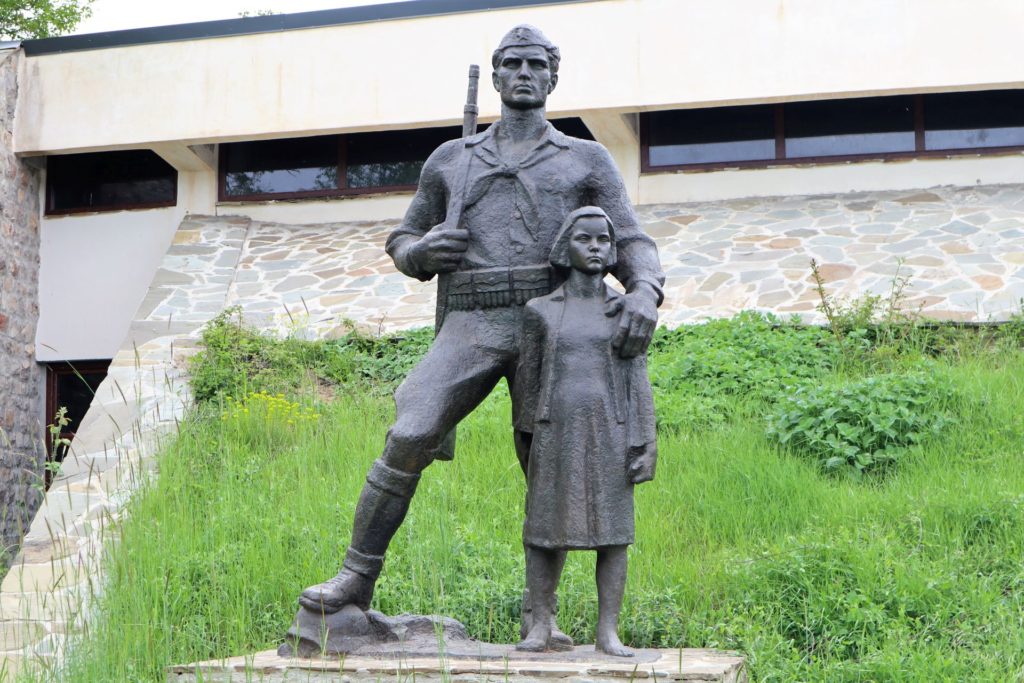 And finally, a few words about one of the most beautiful examples of socialist realism we found in the village of Borovë where we saw the statue of a Partisan and Child, just beside the main road, and several bas-reliefs at the entrance of a cemetery. The monument was constructed to commemorate those who died at the hands of the Nazis in 1943. What happened? A German convoy was attacked close to the village of Borovë and three days later the Germans returned to the village and killed all they could find. Those who were not shot – mainly women, children and old men – were herded into the village church and then burnt alive. A total of 107 people were killed that day and the whole village was destroyed.
And finally, a few words about one of the most beautiful examples of socialist realism we found in the village of Borovë where we saw the statue of a Partisan and Child, just beside the main road, and several bas-reliefs at the entrance of a cemetery. The monument was constructed to commemorate those who died at the hands of the Nazis in 1943. What happened? A German convoy was attacked close to the village of Borovë and three days later the Germans returned to the village and killed all they could find. Those who were not shot – mainly women, children and old men – were herded into the village church and then burnt alive. A total of 107 people were killed that day and the whole village was destroyed.
The panel near the entrance to the graveyard depicts the last moments of the innocent villagers and another panel shows the evil Germans firing from their rifles.
Of course, we might discuss the artistic value of these statues and panels – but to me they were quite touching and I will never forget the massacre of Borovë.
Socialist realism… Art or just propaganda? I would like to hear your opinion about this.

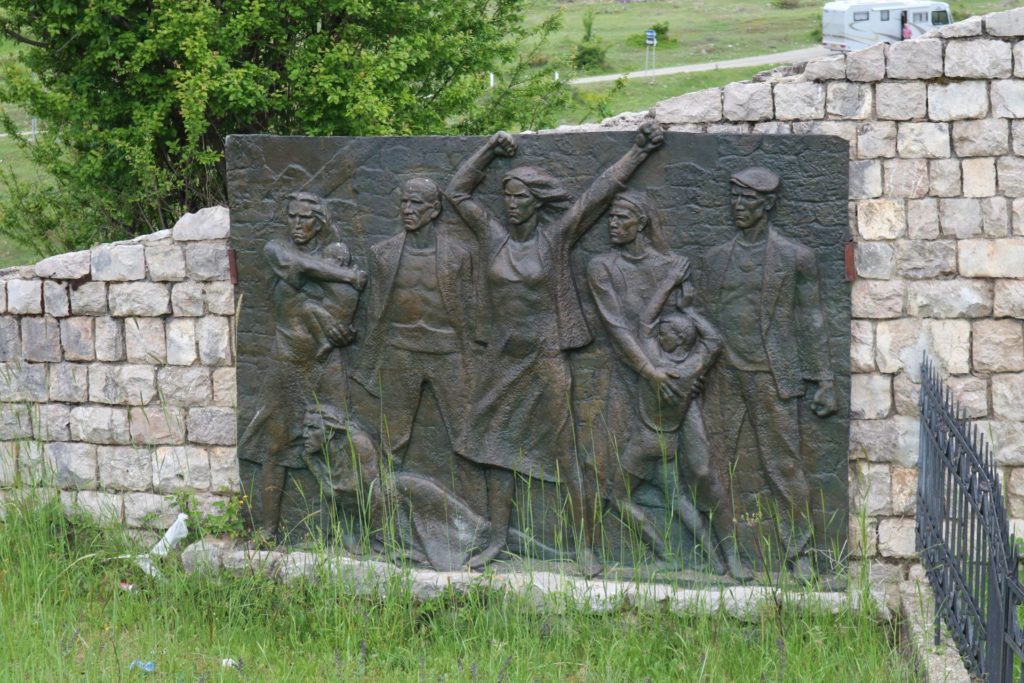
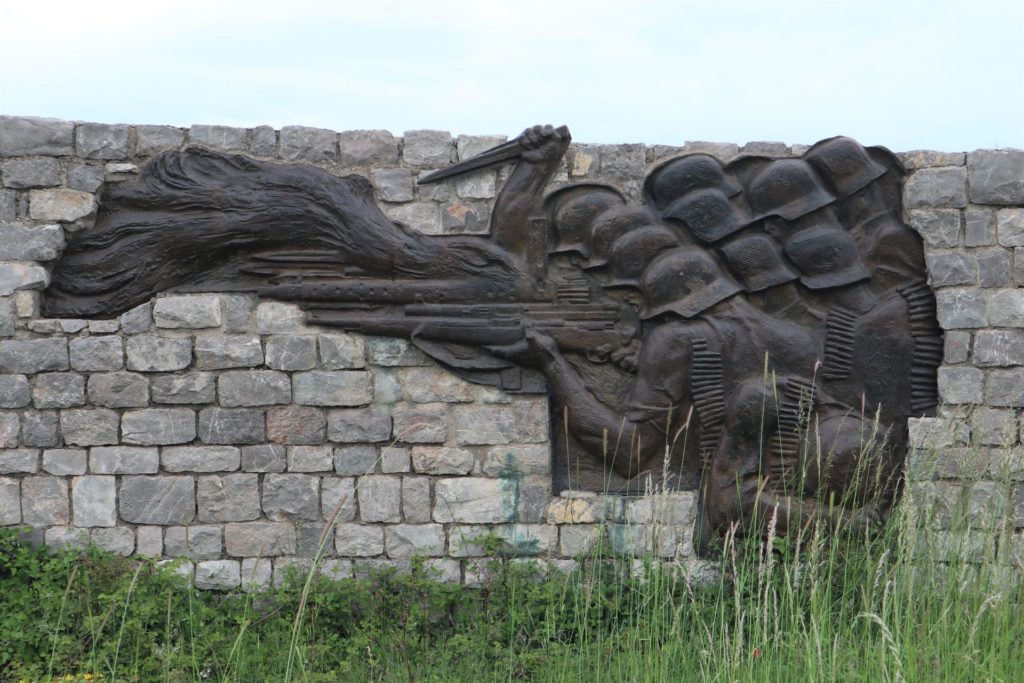
Art that promises the solidarity of society moving towards the common good soured by the spectre of the dictatorship of the proletariat gone wrong.